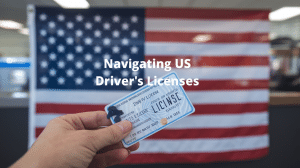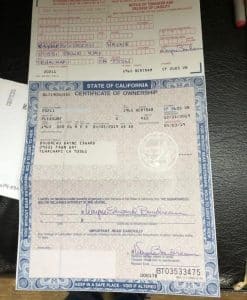
Are you eager to hit the open road but feeling overwhelmed by the process of getting your Pennsylvania driver’s license? 🚗 You’re not alone! Many aspiring drivers find themselves lost in a maze of requirements, tests, and paperwork. But fear not – we’ve got your back!
Navigating the path to driving freedom doesn’t have to be a bumpy ride. With the right guidance and preparation, you can smoothly cruise through each step of the process. Whether you’re a teen driver or an adult looking to get behind the wheel for the first time, our 7 expert tips will steer you towards success. From understanding the basics to acing your road test, we’ll cover everything you need to know to confidently earn your PA driver’s license.
Ready to kickstart your journey to driving independence? Buckle up as we dive into the essential steps you’ll need to take, starting with understanding the requirements and ending with passing your road test with flying colors. Let’s get you on the road to success! 🛣️👍
Understand the Requirements

A. Age and residency eligibility
To obtain a Pennsylvania driver’s license, you must meet specific age and residency requirements. The minimum age to apply for a learner’s permit is 16 years old. However, you must be at least 17 years and 6 months old to take the road test for a full license. Pennsylvania residency is also required, which can be proven through various documents.
| Age Requirement | Eligibility |
|---|---|
| 16 years | Learner’s Permit |
| 17 years, 6 months | Full License Road Test |
B. Required documents
When applying for your PA driver’s license, you’ll need to provide several important documents:
-
Proof of identity (e.g., birth certificate, passport)
-
Social Security card
-
Two proofs of Pennsylvania residency (e.g., utility bills, lease agreement)
-
Parent or guardian consent form (if under 18)
-
Completed DL-180 form (Non-Commercial Learner’s Permit Application)
C. Medical fitness criteria
The Pennsylvania DMV requires all applicants to meet certain medical fitness criteria to ensure safe driving. This includes:
-
Vision test (must have at least 20/70 vision with both eyes, with or without corrective lenses)
-
Physical ability to operate a vehicle safely
-
No medical conditions that could impair driving ability
If you have any medical concerns, you may need to provide additional documentation from your healthcare provider.
Now that you understand the requirements for obtaining a PA driver’s license, let’s move on to the importance of completing driver’s education.
Complete Driver’s Education

A. Classroom instruction
Classroom instruction forms the foundation of your driver’s education in Pennsylvania. These sessions cover essential topics such as:
-
Traffic laws and regulations
-
Road signs and signals
-
Defensive driving techniques
-
Alcohol and drug awareness
-
Basic vehicle maintenance
During these classes, you’ll interact with experienced instructors and fellow learners, providing opportunities for discussions and clarifications. Many driving schools offer flexible schedules to accommodate your needs.
B. Behind-the-wheel training
Behind-the-wheel training is crucial for applying theoretical knowledge in real-world scenarios. This hands-on experience typically includes:
| Training Aspect | Description |
|---|---|
| Basic maneuvers | Parking, turning, lane changes |
| Urban driving | Navigating city traffic and intersections |
| Highway driving | Merging, exiting, and maintaining safe speeds |
| Night driving | Adapting to reduced visibility conditions |
Your instructor will provide immediate feedback, helping you develop safe driving habits and boost your confidence on the road.
C. Online course options
For those with busy schedules, online driver’s education courses offer a convenient alternative. These courses:
-
Allow self-paced learning
-
Provide interactive modules and quizzes
-
Often include visual aids and simulations
-
May be more cost-effective than traditional classroom settings
However, ensure that any online course you choose is approved by the Pennsylvania Department of Transportation (PennDOT) to meet state requirements.
With a solid foundation in driver’s education, you’ll be well-prepared to tackle the next step: obtaining your learner’s permit. This knowledge will not only help you pass the permit test but also contribute to safer driving practices throughout your life.
Obtain a Learner’s Permit

Study the driver’s manual
Before you can obtain your learner’s permit in Pennsylvania, it’s crucial to thoroughly study the driver’s manual. This comprehensive guide contains all the essential information you need to know about traffic laws, road signs, and safe driving practices in PA. Make sure to pay special attention to:
-
Traffic laws and regulations
-
Road signs and their meanings
-
Safe driving techniques
-
Penalties for traffic violations
To help you study effectively, consider creating flashcards or using online practice tests. Here’s a breakdown of the main sections in the PA driver’s manual:
| Section | Key Topics |
|---|---|
| Chapter 1 | Non-commercial learner’s permit information |
| Chapter 2 | Signals, signs, and pavement markings |
| Chapter 3 | Learning to drive |
| Chapter 4 | Driving record information |
| Chapter 5 | Laws and related issues |
Pass the knowledge test
After studying the manual, you’ll need to pass the knowledge test. This multiple-choice exam assesses your understanding of Pennsylvania traffic laws and safe driving practices. To increase your chances of success:
-
Take practice tests online
-
Review challenging topics
-
Get a good night’s sleep before the exam
-
Arrive early to the testing center
Vision screening
As part of the learner’s permit process, you’ll undergo a vision screening to ensure you meet the minimum vision requirements for safe driving. If you wear corrective lenses, be sure to bring them with you.
Pay the permit fee
The final step in obtaining your learner’s permit is paying the required fee. Be prepared to pay this fee at the time of your application. With your learner’s permit in hand, you’ll be ready to start your supervised driving practice and move one step closer to getting your PA driver’s license.
Practice Supervised Driving

Minimum required hours
In Pennsylvania, aspiring drivers must complete a minimum of 65 hours of supervised driving practice before taking the road test. This requirement ensures that new drivers gain sufficient experience behind the wheel. Here’s a breakdown of the required hours:
-
50 hours of general supervised driving
-
10 hours of nighttime driving
-
5 hours of driving in inclement weather
| Practice Type | Required Hours |
|---|---|
| General | 50 |
| Nighttime | 10 |
| Inclement Weather | 5 |
Logging your practice time
Keeping an accurate log of your supervised driving hours is crucial. The Pennsylvania Department of Transportation (PennDOT) provides a standardized form for this purpose. Here are some tips for effective logging:
-
Record the date, start and end times of each practice session
-
Note the specific skills practiced during each session
-
Have your supervising driver initial each entry
-
Keep the log in a safe place, as you’ll need to present it when applying for your road test
Diverse driving conditions
To become a well-rounded driver, it’s important to practice in various conditions. This not only fulfills the state requirements but also prepares you for real-world driving scenarios. Include the following in your practice:
-
Urban, suburban, and rural driving
-
Highway and local road experiences
-
Different weather conditions (rain, fog, snow if possible)
-
Various times of day (morning, afternoon, evening)
-
Different traffic levels (rush hour, off-peak times)
By diversifying your practice, you’ll build confidence and skills that will serve you well during your road test and beyond. Remember, the goal is not just to pass the test, but to become a safe and responsible driver for life.
Schedule and Prepare for the Road Test

A. Choosing a testing location
When scheduling your road test in Pennsylvania, it’s crucial to choose a convenient and suitable testing location. Consider the following factors:
-
Proximity to your home or practice area
-
Availability of test slots
-
Familiarity with local roads and traffic patterns
Here’s a comparison of urban vs. rural testing locations:
| Aspect | Urban Location | Rural Location |
|---|---|---|
| Traffic | Heavier, more complex | Lighter, simpler |
| Road Types | More diverse | Fewer variations |
| Parking | Limited spaces | More open areas |
| Wait Times | Generally longer | Usually shorter |
B. Required documents for test day
Ensure you have all necessary documents to avoid delays or rescheduling:
-
Valid learner’s permit
-
Proof of identity (e.g., birth certificate, passport)
-
Proof of residency
-
Proof of car insurance
-
Vehicle registration
-
Completed driving log with required supervised hours
C. Vehicle requirements
Your test vehicle must meet specific criteria to be accepted for the road test:
-
Valid registration and inspection stickers
-
Functioning lights, signals, and horn
-
Properly inflated tires with adequate tread depth
-
Clean windshield and mirrors
-
Working seat belts for all occupants
-
No warning lights on the dashboard
Remember to familiarize yourself with the vehicle you’ll use for the test. Practice all essential maneuvers in this car to feel confident on test day. With these preparations in place, you’ll be well-equipped to tackle the PA driving test and move closer to obtaining your driver’s license.
Master Essential Driving Skills

Parallel parking
Mastering parallel parking is crucial for passing your PA driver’s test. Follow these steps:
-
Signal and position your car parallel to the parked car in front of the space
-
Slowly reverse, turning the wheel sharply towards the curb
-
Straighten your wheels when your rear wheel aligns with the parked car’s rear bumper
-
Turn the wheel in the opposite direction and back up slowly
-
Straighten your wheels and center your car in the space
Practice this technique in a safe area with cones or boxes before attempting it on the street.
Three-point turns
Three-point turns are essential for navigating tight spaces. Here’s how to execute them:
-
Signal and pull over to the right side of the road
-
Turn your wheel sharply to the left and move forward
-
Shift to reverse, turn your wheel sharply to the right, and back up
-
Shift to drive, straighten your wheels, and proceed forward
| Step | Action | Direction |
|---|---|---|
| 1 | Pull over | Right |
| 2 | Turn and move | Left |
| 3 | Reverse | Right |
| 4 | Proceed | Forward |
Highway merging and lane changes
Smooth merging and lane changes are critical for safe highway driving. Remember to:
-
Use your turn signals
-
Check your mirrors and blind spots
-
Adjust your speed to match traffic flow
-
Look for gaps in traffic and merge smoothly
-
Always yield to vehicles already on the highway
Defensive driving techniques
Defensive driving is key to staying safe on the road. Practice these techniques:
-
Maintain a safe following distance (3-second rule)
-
Anticipate other drivers’ actions
-
Stay aware of your surroundings
-
Avoid distractions while driving
-
Be prepared to react to unexpected situations
By mastering these essential skills, you’ll be well-prepared for your road test and become a safer, more confident driver. Next, we’ll discuss how to approach the road test with confidence and increase your chances of passing on the first attempt.
Pass the Road Test with Confidence

Arrive early and calm nerves
Arriving at least 15 minutes early for your Pennsylvania road test can significantly reduce stress and improve your chances of success. Use this time to:
-
Review important traffic signs and rules
-
Take deep breaths to calm your nerves
-
Double-check your vehicle’s functionality
Listen carefully to examiner instructions
Pay close attention to the examiner’s directions throughout the test. Clear communication is crucial for a successful outcome.
| Do’s | Don’ts |
|---|---|
| Ask for clarification if needed | Interrupt the examiner |
| Repeat instructions if unsure | Make assumptions about the route |
| Maintain a respectful attitude | Engage in unnecessary conversation |
Common mistakes to avoid
Be aware of these frequent errors that can lead to test failure:
-
Rolling stops at stop signs
-
Improper use of turn signals
-
Exceeding speed limits
-
Inadequate observation (blind spots, mirrors)
-
Incorrect parking techniques
Post-test procedures
After completing the road test, remain calm and follow these steps:
-
Park the vehicle safely
-
Turn off the engine
-
Wait for the examiner’s final instructions
-
Receive your test results
-
If successful, proceed to obtain your PA driver’s license
Remember, even if you don’t pass on your first attempt, use it as a learning experience to improve your skills for the next try.

Obtaining your Pennsylvania driver’s license is an exciting milestone that requires preparation and dedication. By following these seven essential tips, you’ll be well-equipped to navigate the process successfully. From understanding the requirements and completing driver’s education to mastering essential driving skills and passing the road test, each step is crucial in your journey to becoming a licensed driver.
Remember, practice makes perfect. Invest time in supervised driving, focus on developing safe habits, and approach your road test with confidence. By staying committed to learning and improving your skills, you’ll not only earn your driver’s license but also become a responsible and competent driver on Pennsylvania’s roads. Good luck on your path to driving independence!






